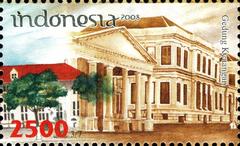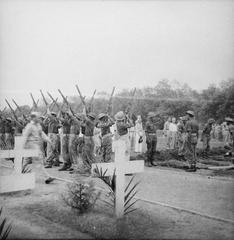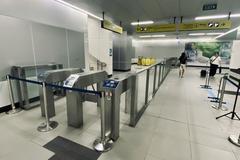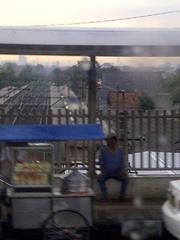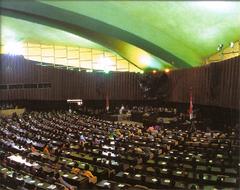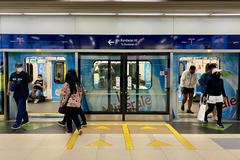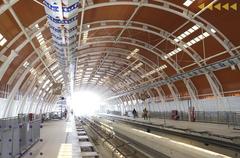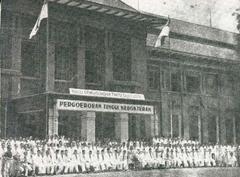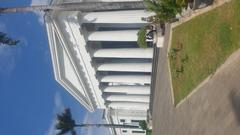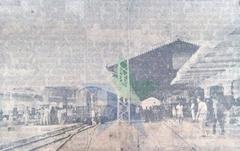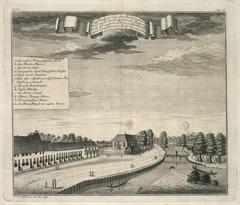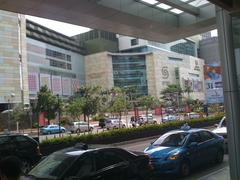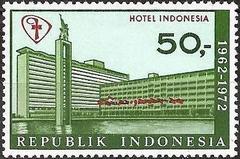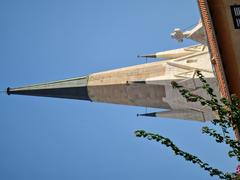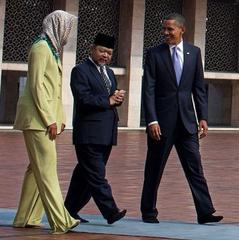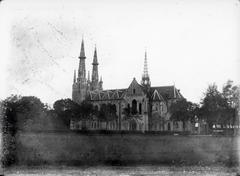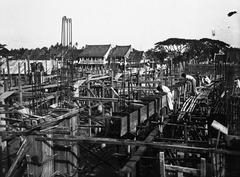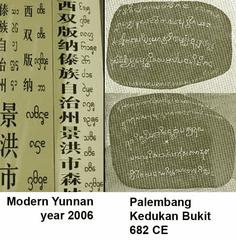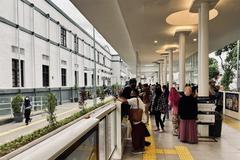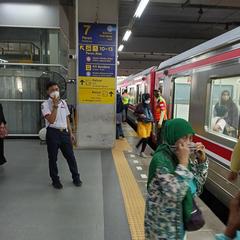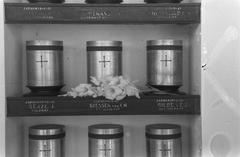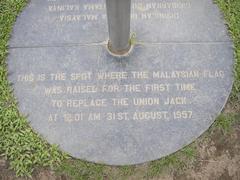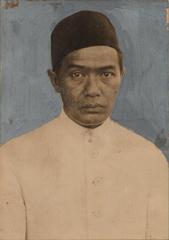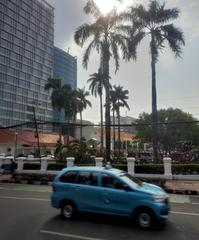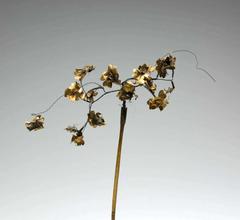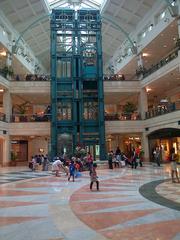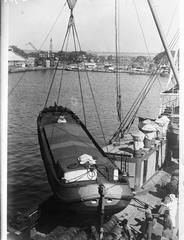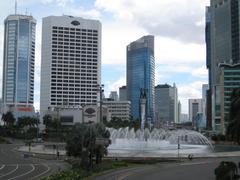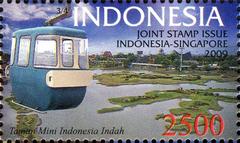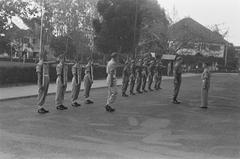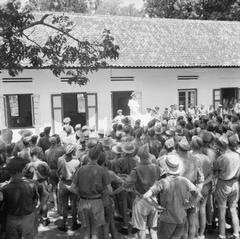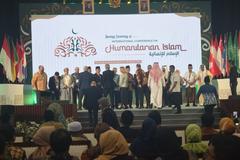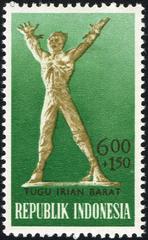Visiting Masjid Raya Bani Umar: History, Significance, and Visitor Information
Publication Date: 18/07/2024
Introduction to Masjid Raya Bani Umar
Masjid Raya Bani Umar, located in Jakarta, Indonesia, stands as a significant landmark that embodies the rich cultural and religious heritage of the region. Known for its historical importance, architectural splendor, and role as a vital community hub, this mosque offers a comprehensive glimpse into the Islamic faith and its enduring presence in Jakarta. Established with a connection to early Islamic history, Masjid Raya Bani Umar has grown to become a cornerstone for the local Muslim population. Its name, translating to “Descendants of Umar,” likely references Umar ibn al-Khattab, the second Rashidun Caliph, highlighting the mosque’s deep-rooted connection to Islamic history (source). Over the years, the mosque has adapted and evolved, undergoing expansions and renovations to accommodate the growing needs of its community while maintaining its historical and religious significance. Visitors to Masjid Raya Bani Umar are not only welcomed into a place of worship but also a center for education, community gatherings, and social support, making it an essential part of Jakarta’s cultural landscape (source).
Detailed Guide Overview
- Introduction
- Historical Background and Religious Significance
- Early History and Establishment
- A Community Hub
- Expansion and Renovation
- Religious Significance
- Daily Prayers
- Friday Sermons (Jumu’ah)
- Ramadan Observances
- Islamic Education
- A Symbol of Faith and Resilience
- Architectural Marvel
- Architectural Style
- The Dome
- The Minarets
- The Prayer Hall
- Modern Touches
- Visiting Masjid Raya Bani Umar
- Visiting Hours and Ticket Information
- Travel Tips
- Nearby Attractions
- Visitor Information
- Address
- Opening Hours
- Entrance Fee
- Dress Code
- Guided Tours
- Photography
- Special Events and Photographic Spots
- Getting Around
- Food and Drink
- Tips for Visiting
- Conclusion
- FAQ
Exploring Masjid Raya Bani Umar - Historical Significance, Visiting Hours, and Tips
Historical Background and Religious Significance
Early History and Establishment
While the exact origins of Masjid Raya Bani Umar are difficult to pinpoint, the mosque’s history is intertwined with the growth of Islam in the densely populated West Jakarta area. The mosque’s name, “Bani Umar,” translates to “Descendants of Umar,” likely referencing the prominent Islamic figure Umar ibn al-Khattab, the second Rashidun Caliph. This suggests a connection to early Islamic history and a dedication to upholding the values of this influential leader.
A Community Hub
From its inception, Masjid Raya Bani Umar has served as more than just a place of worship. It has functioned as a vital community center for the local Muslim population. The mosque provides a space for religious education, community gatherings, and social support, fostering a strong sense of unity and shared identity among its attendees.
Expansion and Renovation
Over the years, Masjid Raya Bani Umar has undergone several expansions and renovations to accommodate the growing needs of the community. These changes reflect the mosque’s enduring importance and its ability to adapt to the changing times while remaining a steadfast symbol of faith.
Religious Significance
As a mosque, Masjid Raya Bani Umar holds deep religious significance for Muslims in the area. It serves as a place for:
- Daily Prayers - The mosque hosts the five daily prayers obligatory for Muslims, providing a dedicated space for individuals and the community to fulfill this fundamental pillar of Islam.
- Friday Sermons (Jumu’ah) - Every Friday, the mosque holds special congregational prayers and sermons, drawing large crowds and emphasizing the importance of community and shared worship in Islam.
- Ramadan Observances - During the holy month of Ramadan, Masjid Raya Bani Umar becomes a focal point for fasting, prayer, and charitable acts, further strengthening its role as a center for spiritual reflection and community engagement.
- Islamic Education - The mosque plays a role in providing Islamic education and teachings to people of all ages, contributing to the transmission of Islamic knowledge and values across generations.
A Symbol of Faith and Resilience
Masjid Raya Bani Umar stands as a testament to the enduring presence and significance of Islam in Jakarta. Its continued growth and evolution reflect the deep-rooted faith of the community it serves. As a place of worship, learning, and community building, the mosque remains a vital spiritual and social hub for Muslims in West Jakarta.
Architectural Marvel
Masjid Raya Bani Umar, while a relatively new mosque in Jakarta, beautifully blends traditional Islamic architecture with modern elements. This fusion creates a visually appealing structure that is both grand and welcoming.
Architectural Style
The mosque’s design takes inspiration from the classic Ottoman architectural style, evident in its prominent features like the central dome and minarets. This style, popularized during the Ottoman Empire’s reign, is known for its grandeur, intricate details, and harmonious proportions.
The Dome
Dominating the mosque’s skyline is its massive central dome, a hallmark of Ottoman architecture. The dome, symbolizing the heavens and the vault of paradise, is covered in gleaming white tiles, reflecting the tropical sunlight and lending an air of majesty to the structure.
The Minarets
Flanking the main building are two towering minarets, another characteristic feature of Ottoman mosques. These slender towers, capped with graceful balconies, serve as visual reminders of the mosque’s presence in the cityscape. Traditionally, muezzins would ascend these minarets to call the faithful to prayer, although today, loudspeakers are more commonly used.
The Prayer Hall
The mosque’s interior is equally impressive. The main prayer hall, a vast, open space, can accommodate a large number of worshippers. The hall is adorned with intricate geometric patterns and calligraphy, reflecting the Islamic emphasis on abstract art and the beauty of the written word. The absence of any figurative imagery, a key tenet of Islamic art, allows worshippers to focus on their spiritual connection during prayer.
Modern Touches
While the mosque pays homage to traditional Ottoman design, it also incorporates modern architectural elements. The use of large glass windows, for instance, allows natural light to flood the prayer hall, creating a bright and airy atmosphere. This blend of old and new gives Masjid Raya Bani Umar a unique character, making it a significant landmark in Jakarta’s architectural landscape.
Visiting Masjid Raya Bani Umar
Visiting Hours and Ticket Information
The mosque is open to visitors every day from 5 AM to 10 PM. There is no entrance fee, making it accessible to everyone who wishes to experience its serene atmosphere and historical significance.
Travel Tips
Visitors are advised to dress modestly in respect of the mosque’s religious significance. It is also recommended to visit during non-prayer times to avoid disrupting worshippers. The mosque is easily accessible by public transportation, with several bus and train routes passing nearby.
Nearby Attractions
While in the area, visitors can explore other historical sites and attractions in Jakarta, such as the National Monument, Istiqlal Mosque, and Jakarta History Museum. These sites provide a broader context to the city’s rich cultural and historical tapestry.
Accessibility
Masjid Raya Bani Umar is equipped with facilities to accommodate visitors with disabilities, including ramps and accessible restrooms.
Visitor Information
Address
Address: Jl. Raya Pondok Gede No.1, RT.1/RW.2, Pinang Ranti, Kec. Makasar, Kota Jakarta Timur, Daerah Khusus Ibukota Jakarta 13560, Indonesia
Opening Hours
Opening Hours: Open 24 hours daily. However, it’s important to note that the main prayer hall may be closed to visitors during prayer times, especially during the Friday prayer (Jumu’ah). It’s best to check the prayer schedule in advance or inquire locally.
Entrance Fee
Entrance Fee: Free. However, donations are welcome and contribute to the mosque’s upkeep and community initiatives.
Dress Code
Dress Code: As with visiting any mosque, respectful attire is required.
- Men: Long pants or trousers, shirts with sleeves (covering at least the elbows), and a head covering (a skullcap or a simple scarf will suffice).
- Women: Loose-fitting, non-transparent clothing that covers the entire body, including arms and legs. A headscarf is also mandatory.
Guided Tours
Guided Tours: While not always available, guided tours can sometimes be arranged by contacting the mosque administration in advance. This can be a great way to gain a deeper understanding of the mosque’s history, architecture, and significance.
Photography
Photography: Photography is generally permitted within the mosque grounds. However, it’s important to be respectful of worshippers and avoid taking photos during prayer times. It’s always a good idea to ask permission before taking photos of individuals.
Special Events and Photographic Spots
The mosque hosts various events throughout the year, such as religious festivals, community gatherings, and educational programs. The beautiful architecture and serene surroundings provide excellent photographic opportunities, particularly during sunrise and sunset.
Getting Around
- Taxi/Ride-hailing Apps: Convenient options for reaching the mosque and nearby attractions. Apps like Gojek and Grab are widely used in Jakarta.
- Angkot (Minivans): Affordable public transportation, but routes can be confusing for first-time visitors. It’s best to ask locals for guidance.
- Bus: TransJakarta, the city’s bus rapid transit system, has routes that pass near the mosque.
Food and Drink
- Warung Makan: Small, local eateries offering a wide range of Indonesian dishes at affordable prices.
- Restaurants: Various restaurants near TMII and other attractions cater to different tastes and budgets.
- Street Food: Explore the vibrant street food scene around Pasar Rebo and other areas for a taste of local flavors.
Tips for Visiting
- Plan your visit: Check prayer times in advance to avoid arriving during closures.
- Dress respectfully: Adhere to the mosque’s dress code to show respect.
- Be mindful of worshippers: Maintain a respectful distance during prayer times and avoid disruptive behavior.
- Carry cash: While some vendors may accept digital payments, it’s always a good idea to have cash on hand, especially for smaller purchases and donations.
- Stay hydrated: Jakarta’s tropical climate can be hot and humid. Carry a water bottle and stay hydrated.
- Learn basic Indonesian phrases: While English is spoken in some tourist areas, learning a few basic Indonesian phrases can enhance your interactions with locals.
Conclusion
Masjid Raya Bani Umar is more than just a mosque; it is a cornerstone of the Muslim community in West Jakarta. Its historical and religious significance, coupled with its role as a community hub, makes it a must-visit for anyone interested in exploring Jakarta’s cultural and spiritual heritage. Plan your visit today to experience the beauty and tranquility of this remarkable site.
FAQ
- What are the visiting hours for Masjid Raya Bani Umar? The mosque is open from 5 AM to 10 PM daily.
- Is there an entrance fee? No, there is no entrance fee to visit the mosque.
- What should I wear when visiting the mosque? Modest attire is recommended out of respect for the religious significance of the site.
- Are there facilities for visitors with disabilities? Yes, the mosque is equipped with ramps and accessible restrooms.
- What are some nearby attractions? Other nearby attractions include the National Monument, Istiqlal Mosque, and Jakarta History Museum.
For more updates and information, follow us on social media or download our mobile app Audiala.
